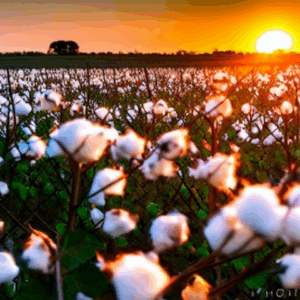Cotton: The Everyday Comfort
In the vast tapestry of textiles that clothe our world, there’s one fabric that stands out for its unparalleled versatility and sheer comfort – cotton.
This natural fiber, woven into our lives for centuries, is more than just a fabric; it’s a testament to the harmonious connection between nature, craftsmanship, and human comfort.
In this article, we embark on a journey to explore the world of cotton, uncovering its history, characteristics, production, and why it remains the epitome of everyday comfort.
The Rich History of Cotton
Cotton’s history is interwoven with the human story itself.
From its origins in ancient civilizations to its pivotal role in global trade, cotton has left an indelible mark on cultures and economies alike. Dating back to 5000 BC, cotton cultivation can be traced to the Indus Valley Civilization, where its soft fibers were spun into threads and woven into garments.
Fast forward to the 18th century, and cotton played a crucial role in the Industrial Revolution, transforming the textile industry and shaping the modern world.

Characteristics That Define Comfort
Cotton’s allure as the “fabric of comfort” isn’t coincidental; it’s deeply rooted in its inherent characteristics. First and foremost, cotton’s breathability makes it an ideal choice for everyday wear.
The natural fibers allow air to circulate, preventing moisture buildup and keeping the body cool. This makes cotton the go-to fabric for everything from t-shirts to undergarments, providing a sense of ease even during the hottest days.
Moreover, cotton is incredibly soft against the skin. Its fibers have a natural smoothness that lends itself to a gentle touch, making it perfect for those with sensitive skin or allergies.
This inherent softness is retained even after multiple washes, ensuring that the fabric remains soothing against the skin over time.

The Process of Cotton Production
Cotton’s journey from field to fabric is a testament to human ingenuity. Cultivating cotton involves careful planning and meticulous care. The process begins with planting seeds in well-prepared soil.
As the plants grow, they produce delicate flowers that transform into cotton bolls containing the precious fibers. Once harvested, the cotton fibers are separated from the seeds and then spun into yarn.
Modern cotton production incorporates innovative techniques, including organic farming practices and sustainable methods. These efforts not only preserve the environment but also ensure that the end product is as pure and comfortable as possible.

Cotton and Sustainability
In a world increasingly concerned about sustainability, cotton emerges as a frontrunner in eco-conscious fashion. With the rise of organic and sustainable cotton farming practices, the environmental impact of cotton production has significantly decreased.
Organic cotton is grown without synthetic pesticides or fertilizers, promoting soil health and reducing chemical runoff into water sources.
Additionally, cotton’s biodegradability means that discarded cotton garments break down naturally, reducing waste in landfills.
Cotton’s Versatility and Style
Beyond its comfort, cotton is renowned for its versatility and style. It effortlessly adapts to various types of garments, from casual to formal wear.
The fabric’s ability to hold vibrant colors and patterns makes it a favorite among designers and fashion enthusiasts alike. Whether it’s a crisp button-down shirt or a cozy hoodie, cotton’s adaptability ensures that it remains a staple in everyone’s wardrobe.

Cotton’s Role in Daily Life
From the moment we wake up to when we settle into bed, cotton envelops us in comfort. It’s the plushness of a cotton bathrobe, the breathability of cotton sheets, and the softness of cotton socks.
Its presence is felt in our favorite jeans, our trusted t-shirts, and the linens that make our sleep peaceful. Cotton’s ubiquity isn’t just a coincidence; it’s a testament to its unparalleled role in providing everyday comfort.
Cotton, with its rich history, inherent comfort, and sustainability, has earned its place as the quintessential fabric of everyday life.
From ancient civilizations to modern eco-conscious fashion, its journey is a reflection of human innovation and appreciation for the natural world.
As we continue to embrace the allure of cotton, we reaffirm its status as not just a fabric but a source of everyday comfort that weaves its way into our lives, reminding us of the harmony between nature and human experience.
Previous: Understanding Fabric Types and Their Care Next Up: Silk: The Luxurious Elegance
